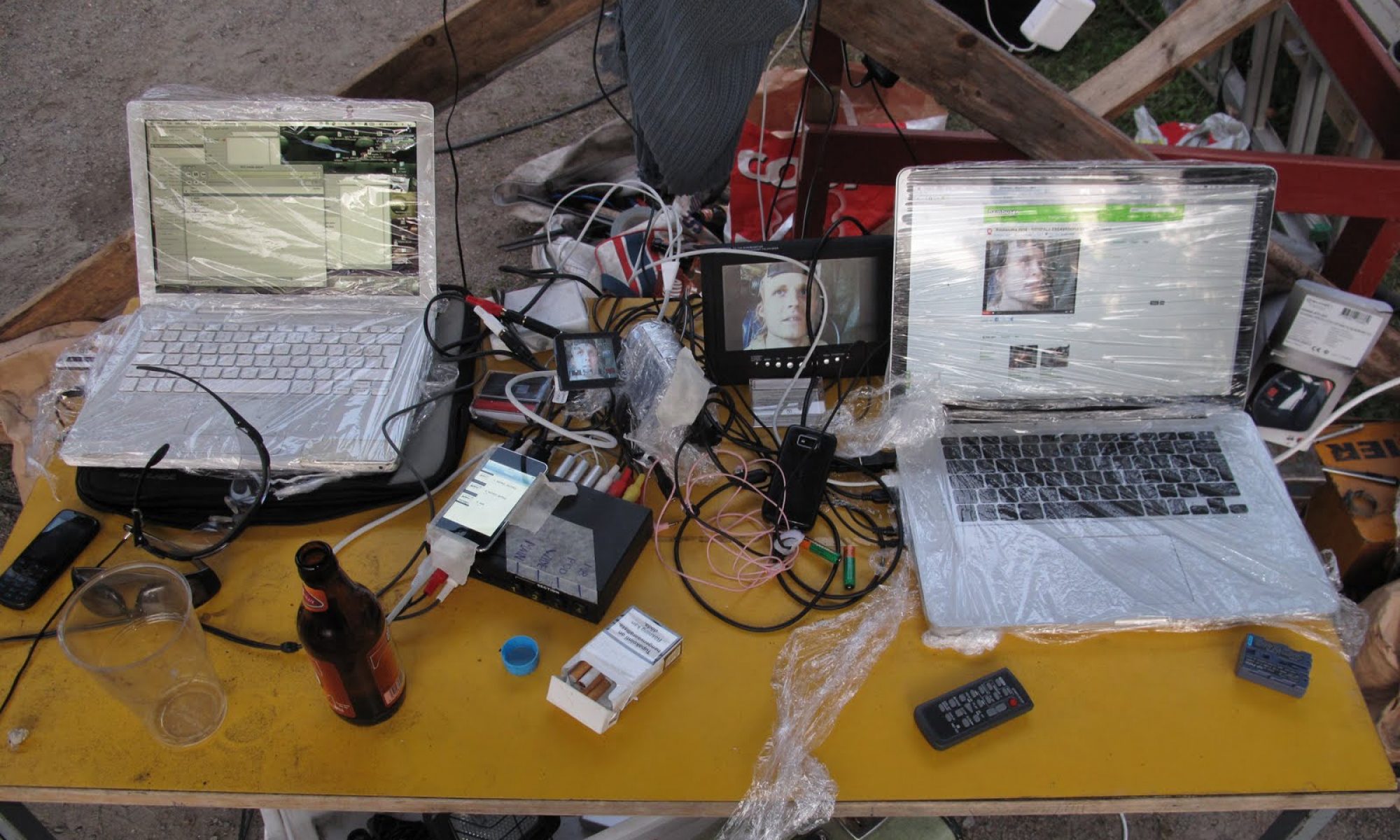Facilitation for Transformation
Short:
Concentrate on your peripheral vision and go for a long stroll through the city. Your walk will be guided by subtle cues such as traffic signs, smells and the movements of other occupants. Follow these signs and do everything the city advices you to do! Document the process. End the walk on a hill top or sea shore. Repeat the exercise in the wilderness. Note to self: Engrave this text onto a vodka bottle
Long:
1. Warmup using exercises for peripheral vision.
Example. Outline a square space and invite members of the group to find their places inside it. Guide the group through body awareness exercises. Participants are guided to stand in a firm posture and relax the muscles they are not using. Focus on deep breathing is emphasised. A soft focus on the environment and other bodies occupying the space is advised. After a concentrated and relaxed stance is found participants are guided to walk inside the space in a unified form and pace. Participants are advised not to focus their gaze on details. The aim of the warmup is to identify subtle cues which motivate and affect behaviour. The exercise develops awareness about involuntary/reactionary signs bodies admit in relation to their environments.
After the group has found a unified pace for walking and navigating inside the space the exercise in stopped and results and effects are discussed in brief. Participants are advised to take notes during the discussions, using a technique which suits them best (photo, text etc.). After feedback the outline or location of the rehearsal space is altered and the exercise repeated. Complexity is added gradually – Objects added to the rehearsal space, pace of movement guided, hints of social interaction within the group identified and cultivated into public gestures. The aim of the warmup is to identify personal comfort zones and the areas of comfort other members in the group occupy. The dynamics of the movements and interactions within the group are discussed after each iteration. Some tips for altering the warm up are detailed in “A Practical Guide to Viewpoints and Composition” by Anne Bogart & Tina Landau (2005).
2. Do the same in public space.
Example. Walk through a shopping centre together with the group using the same concentrated posture and following the peripheral vision guidelines learned during the warmup. Additional focus on interpersonal comfort zones is advised. Participants are guided to move and experiment with the space in a subtle manner. It is important not to disrupt normative behavioural patterns of other occupants in the space. Participants should learn to work unnoticed (as spies) and to use their peripheral vision to navigate. Participants should walk as a unified group but so that their joined action are unnoticed by gatekeepers. After the walk the experience is discussed. Participants are advised to identify details (architectural forms, signs, sounds, smells) which guide their movement in the space. Strolls are done in silent but participants are guided to document details of the experience with text.
After the group has settled into the new environment, participants are launched on personal “probe-walks”. The participants are advised to follow cues the space offers. These cues are to be followed until they lead to a fixed location which the participants deems important. Observations from this fixed spot are to be documented in detail. After data is collected, participants come together and join each others on a joined walk through the space visiting each fixed spot on route. The participant who has found the spot is advised to present it to the group and to offer an explanation on how the spot was discovered, what has motivated them to select it and details of their observations.
3. Speculate
The group is guided to a calm space suitable for talking. Each member of the group is advised to begin their sentence only with the words “What if…” and fill the rest with a speculative statement, which reflects on the previous experiment. Participants can only reply using the same“What if…” structure. The “What if..” exercise is continued for 15 minutes after which the entire experience is discussed together. Participants are advised to document the discussions.
Facilitation vs. Transformation
- Facilitators engage the creativity of a group and extracts ideas which are just under the surface. A facilitator uses various methods (world cafe, development walk etc.) to approach the same questions. Ideas are formulated and iterated in open development cycles. Everybody participates in everything. The results are compromises which change the environment the group is occupying.
- An artist engages with agony of a group and together they identify processes which terrorise them the most. They use their creativity as a lockpick and look for ways to disrupt the status quo. Ideas branch out and individuals work on private projects. They compete on who comes up with the wildest ideas and disruptive practices. The results are uncompromising statements about the world, which may (or may not be) quoted later.
Community Art as Facilitation
- Get 2300€ of funding
- Invite 12-24 individuals to share their ideas during 4-8 joined meetings
- Take the ideas of the people and make an artwork
Community Art as Transformation
- Get 2 mil. in funding
- Invite 72 individuals to collaborate for a year (~2300€/month each)
- The project changes people forever

